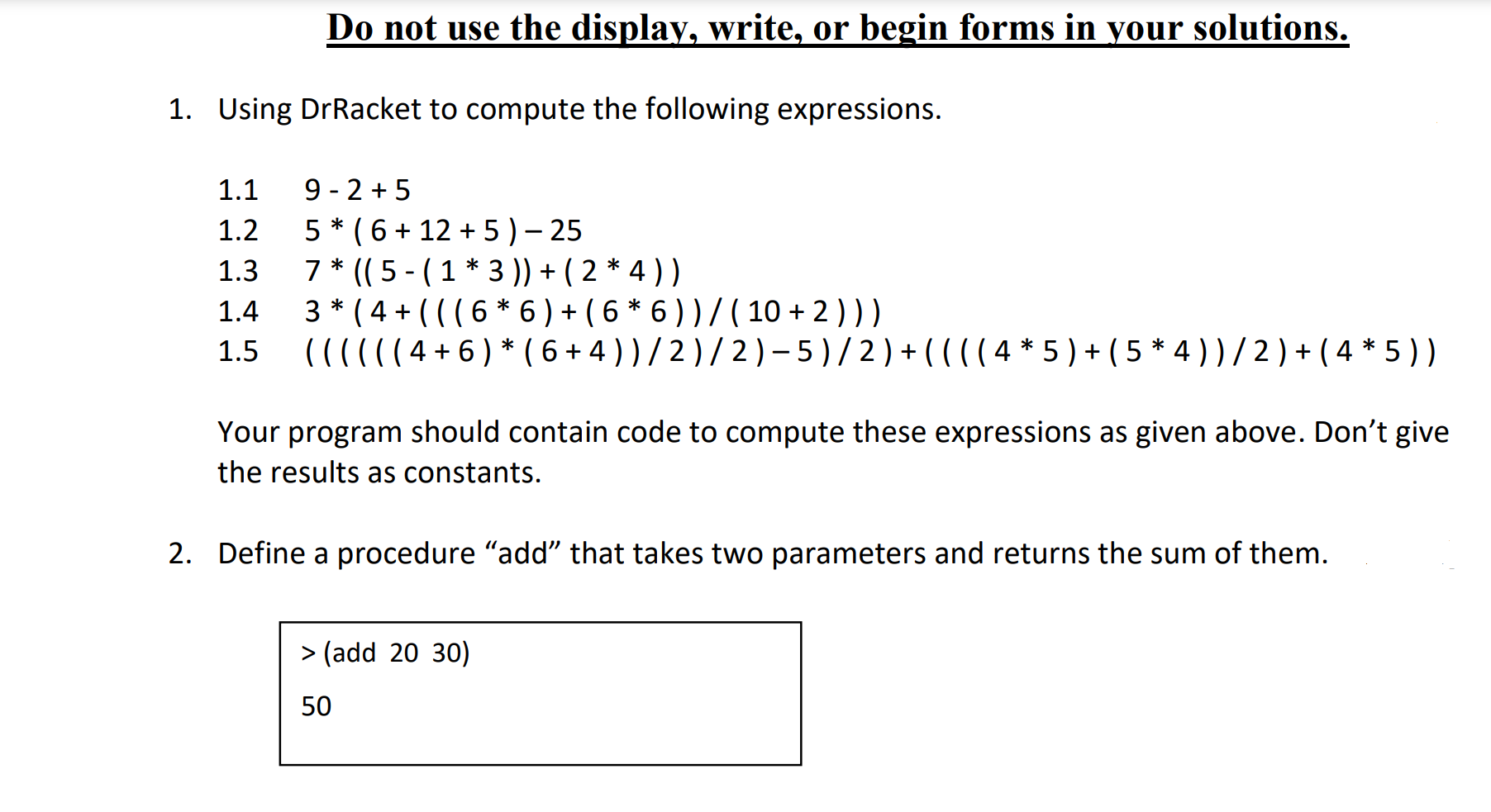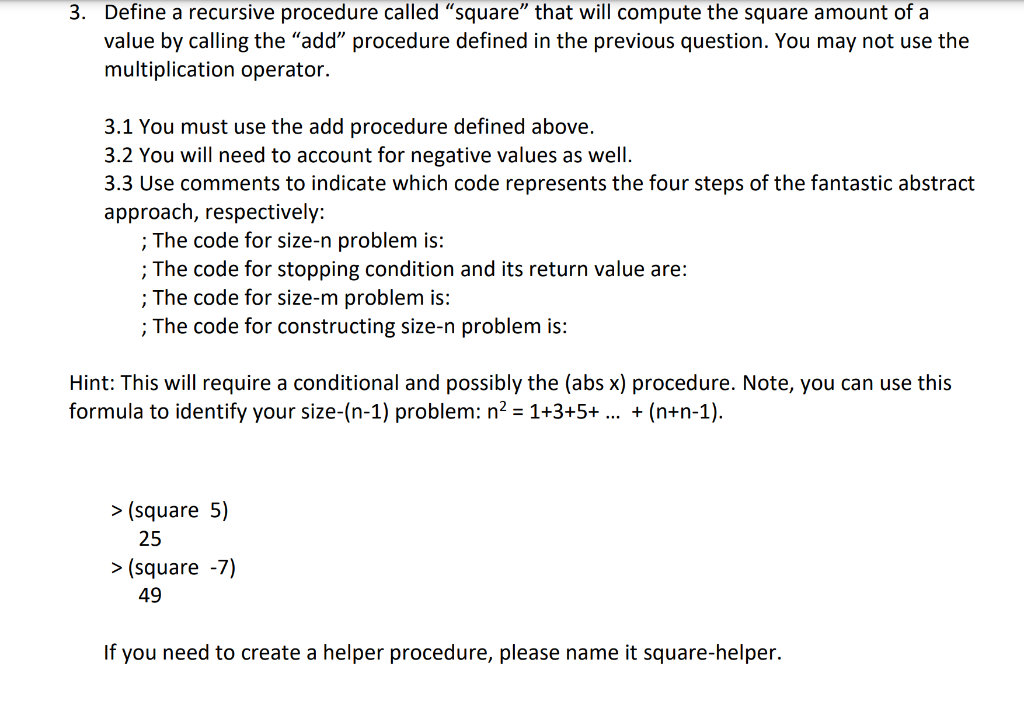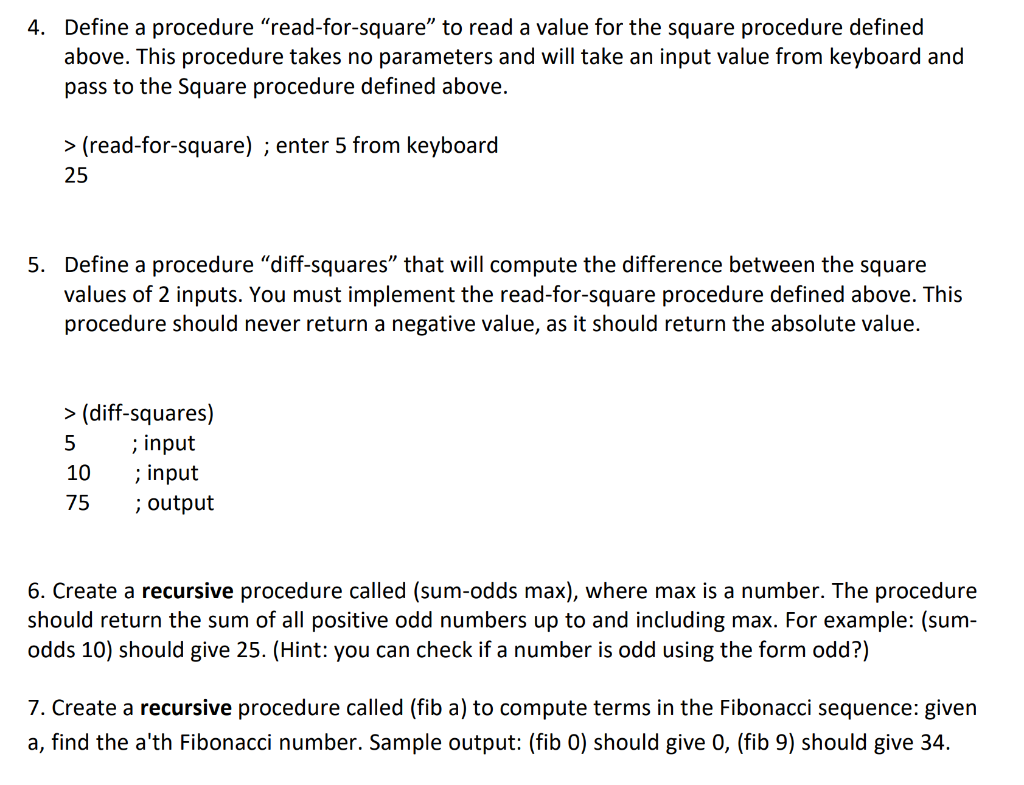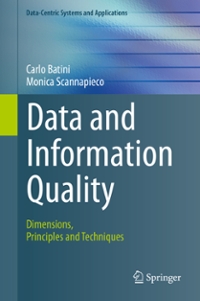Answered step by step
Verified Expert Solution
Question
1 Approved Answer
In this assignment, you will be learning Scheme through the use of DrRacket. We start with some basic concepts; trying to understand prefix notation and
In this assignment, you will be learning Scheme through the use of DrRacket. We start with some basic concepts; trying to understand prefix notation and using procedures in Scheme. You may only use the procedures shown in the text and slides also see below for three prohibited forms in this assignment - not any of the additional library procedures in R5RS Scheme. Solve the following questions in the .rkt template provided.



Step by Step Solution
There are 3 Steps involved in it
Step: 1

Get Instant Access to Expert-Tailored Solutions
See step-by-step solutions with expert insights and AI powered tools for academic success
Step: 2

Step: 3

Ace Your Homework with AI
Get the answers you need in no time with our AI-driven, step-by-step assistance
Get Started


